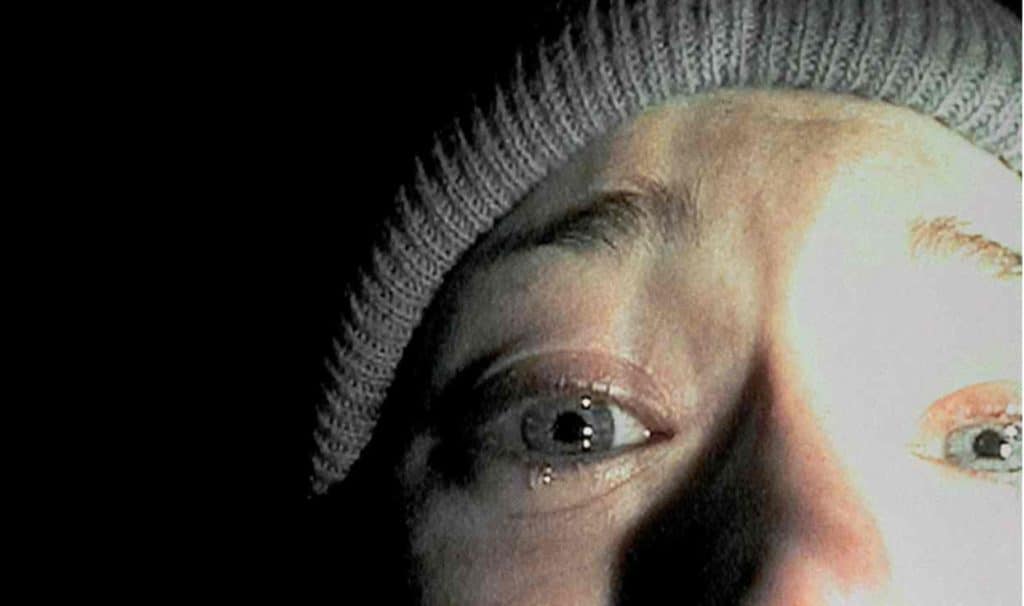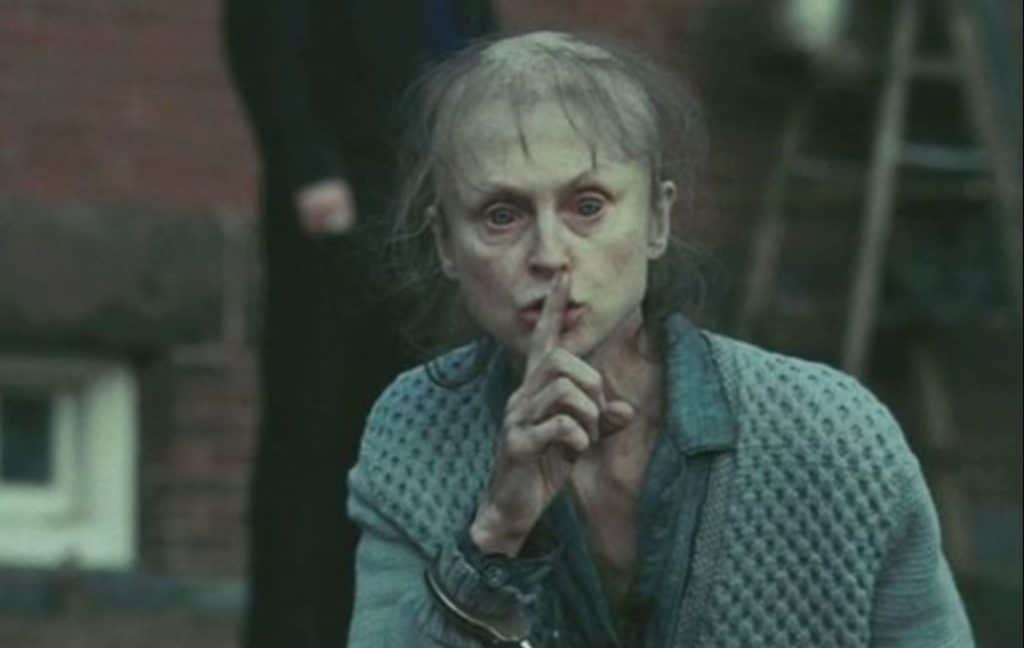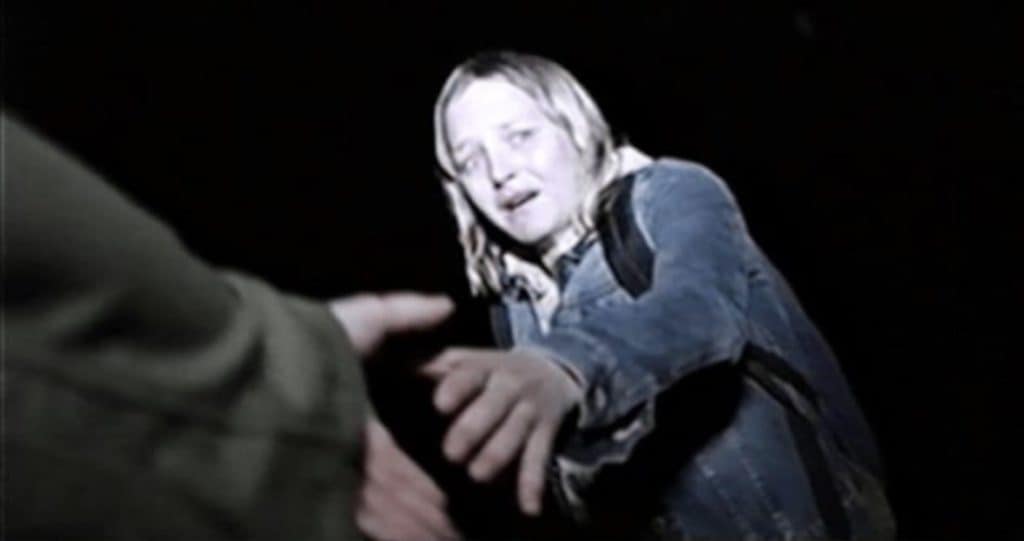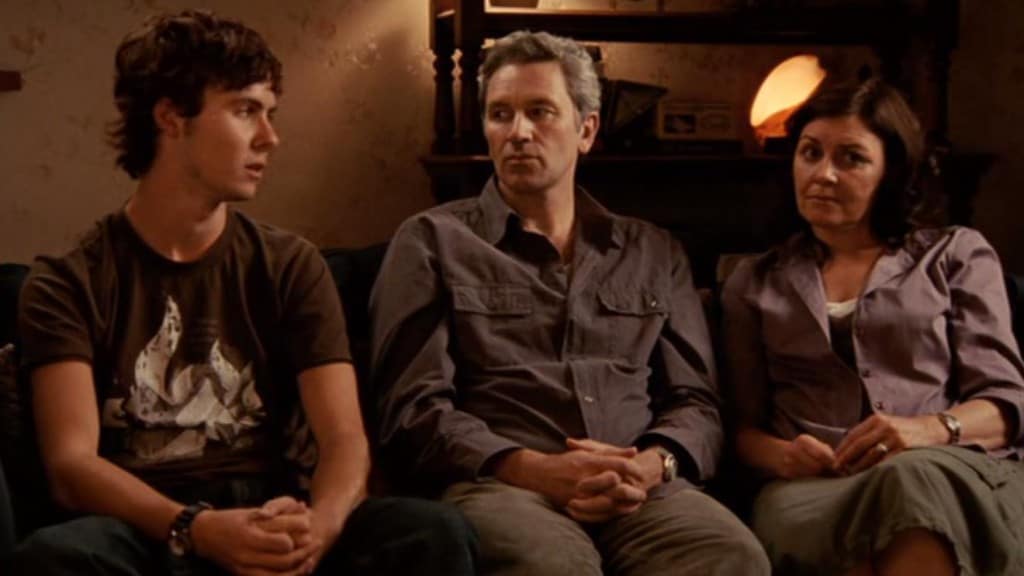
The Revival of Found Footage
At the turn of the 21st Century, a brilliantly simple low-budget film was made. Three student filmmakers, searching for clues to an urban legend. Wandering in the Black Hills of Maryland, the trio goes missing. After their equipment is discovered, the footage reveals a terrifying encounter. Many film aficionados would say a cult classic was born. What’s more, it would also become the best found footage horror movie of all time.
Droves of horror fans flocked to witness The Blair Witch Project (1999). It has no memorable special effects. The improvised dialogue is not accompanied by a heart-pounding soundtrack. There isn’t a complicated plot. The film left audiences with an impressionable amount of fear. Over a single astounding box-office weekend, movie fans witnessed the revival in a horror genre left for dead.
When the Camera is a Character
Casting the camera as a character is what makes found footage horror so unique. So, how could three people wandering in the woods with a camera be so terrifying? According to IndieWire, “The great trick of found footage: sometimes, just sometimes, if the films are really good and the people behind them are really adept at getting into the gag, they can convince their audience it truly is the “real world” they’re watching on the big screen. Found footage is at its arguable best when it’s toeing the line between fantasy and reality, bending it until it disappears.”
Of course, documentaries and docudramas have always followed a similar “formula.” The camera is an extension of the storyteller. In The Taking of Deborah Logan (2014) the acting is so convincing and the documentarians so authentic, it’s easy to forget the story unfolding, following a woman suffering from Alzheimer’s is a found footage horror movie.

Found Footage Traps the Audience
What the best found footage horror movie does best is trap the audience. The point of view is often limited. On the one hand, it’s like peering outside a small window. The unknown fear, nibbling at the perimeter of the camera. On the other hand, found footage confines the terror, framed inside a limited space.
Except for the initial setup of the storyline, the best found footage turns on the camera and begins “speaking” almost immediately. The point of view (POV) is the person “holding” the camera. Objective POV (outside the character’s minds), subjective POV (what the characters are thinking), and omniscient POV (the narrator explains the character’s thoughts) don’t support a found footage filming technique.
Regardless of the setting – in the desert, Phoenix Forgotten (2017), an abandoned nuclear plant Chernobyl Diaries (2012), or even grandma’s house The Visit (2015) – the static point of view limits the audience’s ability to see past the perimeter of the camera lens for the majority of the film. It’s a delicious form of entrapment. Found footage continues to find itself as a popular filming technique.

No Reality is Off Limits
Of the hundreds of found footage films, there are a few that have made extreme and lasting impacts. A young couple’s world turned upside down in the wildly popular Paranormal Activity (2007) paints a realistic portrait of how everyday life can be interrupted by an evil presence. Continually voted as a Top 10 Best horror film, the combination of “the found footage technique led to an effective psychological ruse on the viewer.”
One year later, a party amongst friends introduced the horror fan to Cloverfield (2008). Simply one of the finest moments in found footage horror history. The grainy film quality, natural lighting, mixed with a few magical special effects spawned three sequels with three completely separate plotlines and points of view. The monster is the only connecting thread to the other films and has driven the Cloverfield fans wild with excitement each time a new installment is released. Pretty amazing what a hand-held camera can inspire.
Last, but certainly not least, is the slow-burn Lake Mungo (2008). One of the best found footage horror films. The story of the egregious loss of a child. A grieving family. Tortured by strange events that start occurring, in their home and about town. Forcing them to hire a parapsychologist for answers. According to IndieWire.com, when the dead girl’s secrets slowly become exposed, at the film’s core “it’s devastating; it’s terrifying, and I think every single person with a pulse should watch it at least once and then immediately call their loved ones.”

The Complexity of Found Footage Horror
The complexity of found footage horror lies simply within its simplicity. The Blair Witch Project can be seen as an experiment; a new way to introduce audiences to a view through the camera’s lens. Some questioned if the film was actually fiction. It was touted and merchandised as a “real investigative project.”
Not a new filming technique, by any stretch. More of a resurrection, a renaissance in first person POV. And it looked 100% real. No fanfare to witness the fear and participate in the film from a completely different point of view. It can feel as if you’re holding the camera at times. Propelled into a singular focus.
What’s so good about found footage horror? “The hype, intrigue, and skepticism surrounding the account.” With The Blair Witch Project, “what eventually emerged — a feature-length film made of spliced together scenes of shaky home video footage — made the demise of its three characters seem all the more authentic and terrifying.”
On a $60,000 budget, the film spawned a $246 million box office smash and has ushered in a collection of found footage horror films that use a simple concept – reality – and place it inside a camera with terrifying results.
